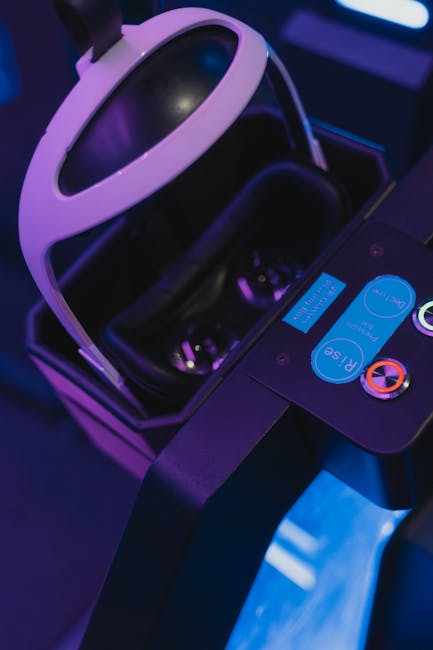Unlock encrypted content
Please enter your SSCE key to initiate on-the-fly decryption.
Decryption key: (Click cancel if you don't have the key)
Copied link to clipboard.
This feature is unavailable for free accounts. Upgrade now and enjoy all Premium benefits.
Go Premium!
This feature is unavailable for free accounts. Upgrade now and enjoy all Premium benefits.
Go Premium!
Please open this page in browser ( Google Chrome or Safari ) to use this feature.
Open In Browser
The Future of Data Storage: Nanotechnology and Augmented Humans.
Random related video for this blog.
Copied share link to clipboard.
Data storage has come a long way since the days of floppy disks and CDs. Technological advancements have made it possible for us to store vast amounts of data in increasingly smaller spaces. But as the amount of data we generate continues to grow, we need new solutions that can keep up with our needs. Nanotechnology and augmented humans may be the key to solving our data storage problems.
The Evolution of Data Storage
The first hard drives were massive, expensive, and held only a few megabytes of data. Over time, hard drives became smaller and more affordable, and the amount of data they could hold increased. But hard drives have their limitations. They're prone to mechanical failure, and they're not very portable. This led to the rise of cloud storage, which allows us to store our data remotely and access it from anywhere with an internet connection.
Cloud storage has its own set of challenges. The more data we store, the more vulnerable we become to data breaches and cyber attacks. And as the amount of data we store in the cloud continues to grow, we need more and more storage space, which can be costly.
Nanotechnology and Data Storage
Nanotechnology is the science of manipulating matter on a molecular or atomic scale. It has the potential to revolutionize many industries, including data storage. Researchers have been exploring the use of nanotechnology in data storage for years, and they've made significant progress.
One of the most promising applications of nanotechnology in data storage is the use of nanowires. Nanowires are incredibly thin wires that can store data in a way that's much more efficient than traditional hard drives. They can store data in three dimensions, which means they can hold much more data in a smaller space. They're also much faster than traditional hard drives, which means we can access our data more quickly.
Augmented Humans and Data Storage
As the amount of data we generate continues to grow, we need new solutions that can keep up with our needs. Augmented humans may be the key to solving our data storage problems. Augmented humans are people who have technology integrated into their bodies. This technology can enhance their physical abilities, but it can also enhance their cognitive abilities.
One of the most promising applications of augmented humans in data storage is the use of brain implants. Brain implants can enhance our ability to process and store information. They can also allow us to access our data more quickly and efficiently. This technology is still in its early stages, but researchers are optimistic about its potential.
Conclusion
The future of data storage is exciting and full of possibilities. Nanotechnology and augmented humans may be the key to solving our data storage problems. With nanowires and brain implants, we can store and access more data than ever before. And with FileLu's cloud storage, we can rest assured that our data is safe and secure. As we continue to generate more data, it's important that we stay up to date with the latest technological advancements in data storage.
FileLu offers a range of premium and free plans for large file transfer, online backup, and encryption file sharing. With its simple setup and mobile app, it's easy to use and accessible from anywhere. The Internet of Things (IoT) is also integrated with FileLu, allowing for seamless integration with other devices. As we look to the future of data storage, it's clear that FileLu will be an important player in the industry.
By Amelia Isabella.
Email: [email protected]
Related
The Future of Data Storage: Exploring Artificial Intelligence, Secure Data...
July 10, 2023
Read More
Effective Project Management Software for Remote Work: Ensuring Data Security...
May 11, 2025
Read More
Secure Collaboration in Biotechnology Using Intelligent File Tagging and Machine...
May 31, 2023
Read More
Efficient File Sharing, Data Storage, and Synchronization with Blockchain and...
June 3, 2023
Read More
The Future of Technology: Automation, Genetic Engineering, and Cloud Storage.
June 7, 2023
Read More
Popular
Revolutionizing Data Management: Innovations in Storage, Security, and Sustainable Technology.
September 24, 2025
Read More
The Future of Technology: Data Privacy, Self-Driving Cars, and Hybrid...
September 21, 2025
Read More
Exploring the Future of Data Management: Security, Efficiency, and Cognitive...
September 28, 2025
Read More
The Future of Data Storage: Exploring Advanced Encryption, Mobile Integration,...
October 5, 2025
Read More
Latest
The Future of Data Storage: Exploring Advanced Encryption, Mobile Integration,...
October 5, 2025
Read More
Exploring the Future of Data Management: Security, Efficiency, and Cognitive...
September 28, 2025
Read More
Revolutionizing Data Management: Innovations in Storage, Security, and Sustainable Technology.
September 24, 2025
Read More
The Future of Technology: Data Privacy, Self-Driving Cars, and Hybrid...
September 21, 2025
Read More
The Future of Cloud Storage: Innovations in Scalable Storage, Synchronization,...
September 10, 2025
Read More
The Future of File Storage: Exploring Cryonics, Transhumanism, and Advanced...
September 7, 2025
Read More
Innovations in Cloud Storage and Data Management: Navigating the Future...
September 3, 2025
Read More
The Future of Technology: Integrating Virtual Reality, Autonomous Driving, and...
August 27, 2025
Read More
The Future of File Management: Innovations in Data Sovereignty, Security,...
August 24, 2025
Read More
The Future of Data Management: Exploring Innovations in Robotics, Genetic...
August 20, 2025
Read More
The Future of Data Management: Exploring Efficient Technologies in File...
August 13, 2025
Read More
The Future of Technology: Exploring Innovations in Artificial Intelligence, Data...
August 10, 2025
Read More
The Future of File Management: Exploring Cloud-Based Backup, Video Storage,...
August 6, 2025
Read More






















